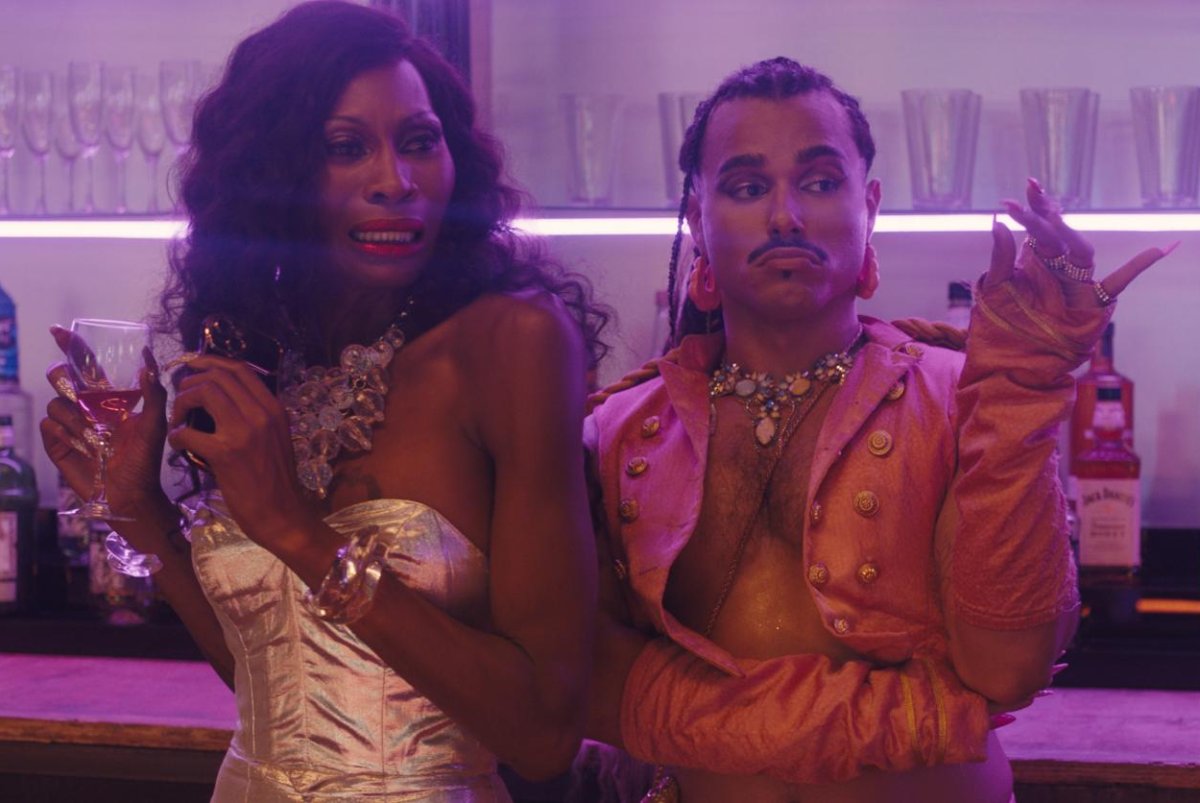1 of 5 | Dominique Jackson and Tomás Matos star in “Queens of the Dead,” in theaters Friday. Photo courtesy of Shannon Madden/Independent Film Company and Shudder
LOS ANGELES, Oct. 24 (UPI) — Tina Romero says she honored her late father, George Romero’s, zombie rules in her own movie Queens of the Dead, in theaters Friday. Romero invented the modern zombie genre with 1968’s Night of the Living Dead.
A 2004 remake of Romero’s Dawn of the Dead popularized running zombies, which Romero said her father opposed. In a recent Zoom interview with UPI, Romero said slow, shambling zombies were the most important rule to her father, who died in 2017.
“No running zombies,” Romero said. “Gotta be slow. That’s the no. 1 important rule.”
Still, Tina Romero found it challenging to ensure her zombie extras were slow enough to pass her father’s test. Even after all of her father’s films, and episodes of The Walking Dead since 2010, Romero had to direct her zombies to slow down.
“You gotta be slow, slower than you think,” she said. “I like to tell people to pick two parts of their body that don’t work. Maybe it’s your neck and your shoulder and you just have to hold those two pieces as if they’re dead and try to shuffle forward.”
In Queens, the zombie outbreak occurs the night of a drag club performance. These zombies, however, still use their cell phones. Romero said she believes her father would approve of her interpretation.
“I walk around and I’m like, we are all phone zombies,” she said. “This is the real zombie. This thing is eating our brains more than anything else.”
Viewers ascribed social messages to the original Dead films as well, which George Romero downplayed. Night had racial undertones amongst the group of survivors, and Dawn of the Dead, with zombies returning to a shopping mall, was interpreted by many as a commentary on consumerism.
Tina Romero explicitly wanted to deal with social issues in her zombie comedy. She and co-writer Erin Judge also included opioids, information overload and the corporatization of queer talent, but device addiction was her primary message.
“It’s really freaked me out deeply how I can feel my own brain shifting in the time that I’ve had this little distraction box,” she said.
In that regard, Romero launches a brand new zombie apocalypse in Queens of the Dead. The mayor, played by Dawn and Day of the Dead makeup artist Tom Savini, says this is not a George Romero film.
Romero said she wanted to see a zombie outbreak occur in a modern world, whereas her father’s films, particularly the sequels, begin in worlds already overrun by zombies.
“I’m going to go ahead and say it’s the same spiritual outbreak,” she said. “It’s happening because of collective deep spiritual longing and unrest and a dark hole. That is the same but I wanted to start it again.”
Aside from adding phones, Romero honored her father’s zombie rules such as a zombie bite spreads the infection and a headshot will kill the creature for good. Queens also follows Dawn of the Dead’s lead by giving all the zombies a base green color.
Makeup department head Christina Grant helped combine the zombie green with drag queen makeup.
“She found the perfect shimmer to apply on top of it and she made sure that all of our prosthetic masks left room for a fabulous eyeshadow look,” Romero said. “I wanted to glam up the zombies.”
Savini only plays a cameo role as the mayor, but he did gift Tina a zombie baby puppet to use in the film. The Walking Dead producer Greg Nicotero, who worked on George Romero’s Land, Diary and Survival of the Dead, also donated leftover zombie props.
“He sent us boxes of intestines, which we didn’t actually need a lot of intestines,” she said. “We did walk around set using some of those large intestines as boas so that was fun. We have them in the background of the glitter bitch party but he also sent us prosthetics.”
Romero grew up on her father’s sets and appeared in Monkey Shines, Bruiser and Land of the Dead. Still, she attended New York University’s Tisch School for the Arts Graduate Film Program in 2006.
“My dad rolled his eyes about that,” she said. “He was like, ‘You don’t need to go to film school’ but I really wanted it. I think it’s really good to know what every department is doing and what is required in every department.”
Despite her affinity for zombie movies, Romero said she resisted making one herself for a long time. When she had the idea to set one in the LGBTQ+ world and drag shows, she realized she could make the family business her own.
“Those are some big shoes to fill and I didn’t want to come out trying to be him,” Romero said. “I felt it was important not to shy away from the fact that I am his kid. I wanted to embrace that fact and stay true to certain things about the movies that he made while also introducing my own voice, my perspective, which is female, it’s queer, it’s dance-y and it’s a little bit more fond of the color pink than he was.”

